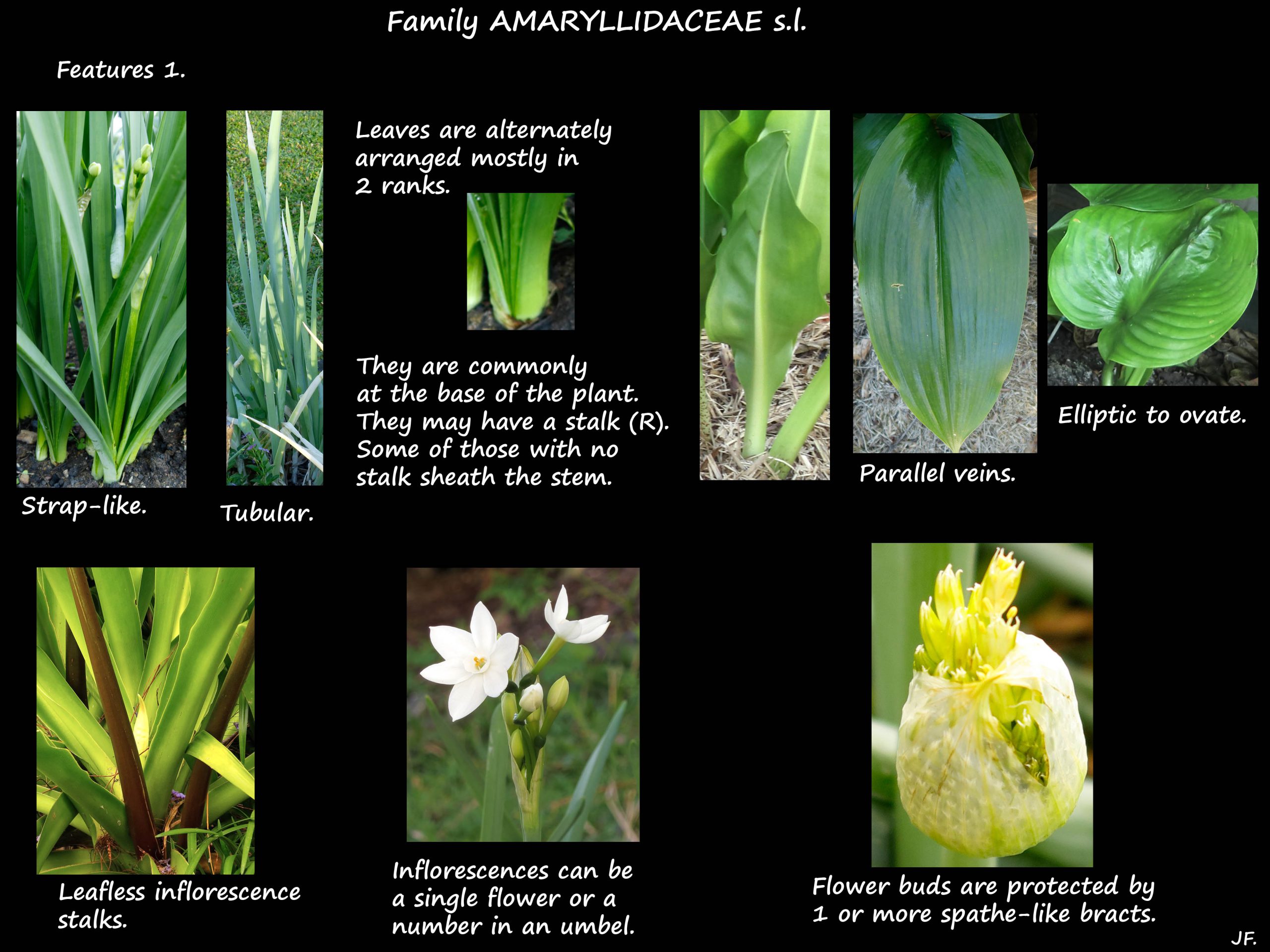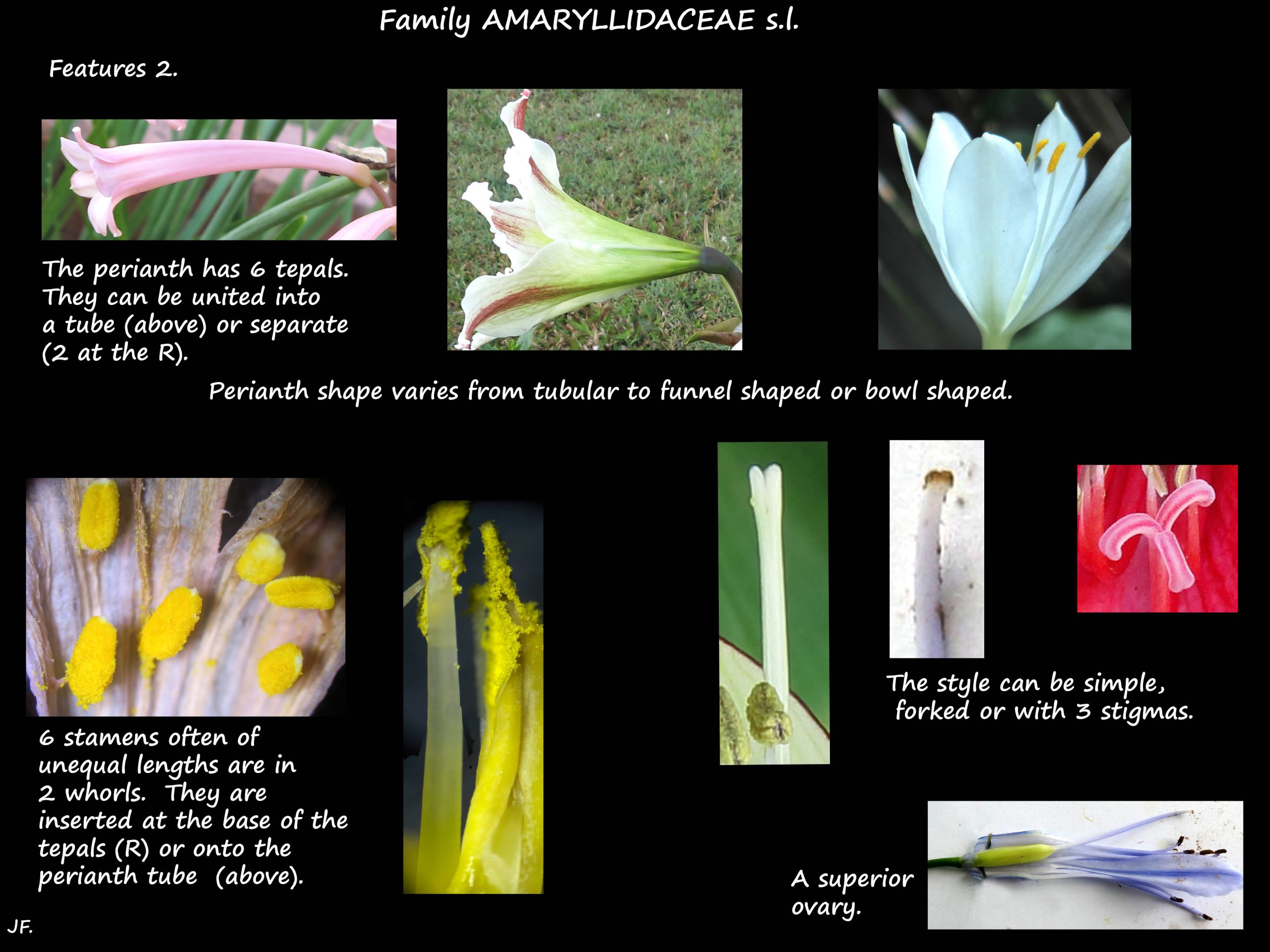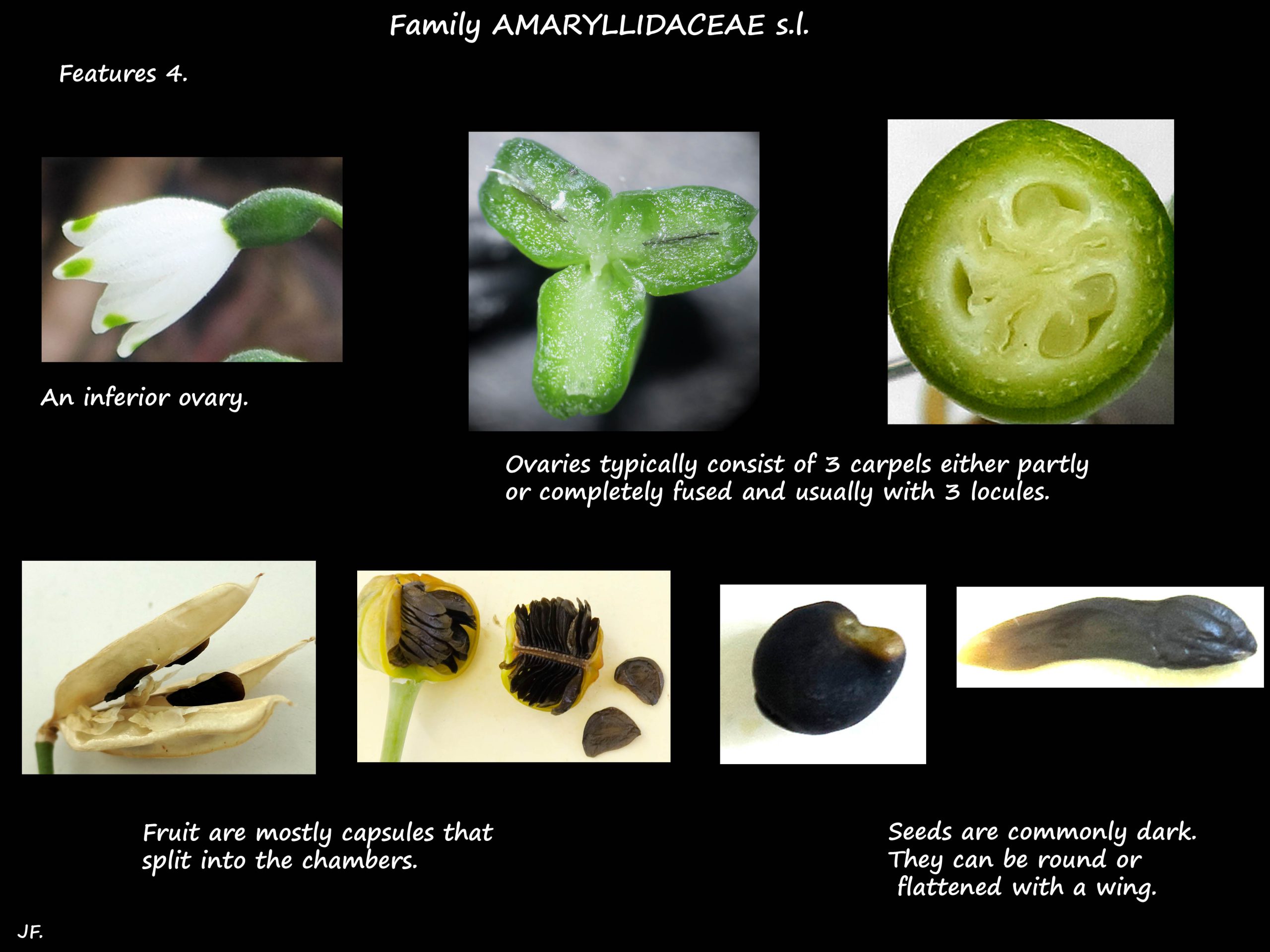Amaryllidaceae family.
In reading any article about the Amaryllidaceae it is important to note how it is defined – whether in a strict or lose sense.
The original family has undergone a lot of changes and the classification history is complex and probably still not settled.
This accounts for the range of figures given for the number of genera (60 – 90) and species (800- 2258).
Originally the Order Asparagales contained (among others) the three families of Agapanthaceae, Alliaceae and a strictly defined Amaryllidaceae (s.s. sensu stricto).
These 3 families have now been reduced to subfamiies in a new, loosely defined family called Amaryllidaceae s.l. (sensu lato).
The sub-families are the Agapanthoideae, Allioideae and Amaryllidoideae.
For the new losely defined Amaryllidaceae s.l. The Plant List recognises 80 genera with 2258 species and the AGP 3
(Angiosperm Phylogeny Group) has 73 genera and 1605 species.
The Amaryllidaceae s.l. are closely related to the Liliaceae and are occasionally seen as one family.
Family Amaryllidaceae s.l.
They have a worldwide occurence with a few genera (3 to about 8) native to Australia with up to 17 species.
They have superior or inferior ovaries and flowers in umbels subtended by a bract.
(Umbels are inflorescences where all the flowers arise form a common point.)
Some of the better known genera are Agapanthus, Allium (onions), Amaryllis (belladonna lily), Clivia, Crinum (swamp lily), Cyrtanthus, Galanthus (snowdrop), Haemanthus (blood lily), Hippeastrum, Hymenocallis (spider lily), Ipheion, Leucojum (snowflake), Lycoris, Narcissus (daffodils), Nerine, Proiphys, Tulbaghia (society garlic) and Zephyranthes (storm lily).
Plants are mostly perennial, terrestrial herbs.
Most grow from bulbs (underground stems) that have a membranous cover.
A few grow from rhizomes, also underground stems.
Leaves are mostly deciduous and arranged alternately in a spiral or 2 ranks.
They may be at the base or along the stem.
Some leaves have stalks and those that do not may have bases that sheath the stem.
Leaves are fleshy or herbaceous, usually flat and smooth with parallel veins.
They are simple and may be linear, lanceolate, ovate, oblong, tubular or elliptic.
Inflorescences are terminal, sometimes a solitary flower but often with flowers arranged in an umbel or head.
Inflorescence stems are leafless and occasionally appear before the leaves.
Two (1 to a few) papery spathe-like bracts protect the flower buds.
The bisexual flowers are almost always radially symmetric.
They may or may not have a stalk.
There may be nectaries on the inner tepals or the ovary.
The perianth commonly consists of 6 petal-like tepals.
They may be separate or joined to form a tube (floral, hypanthial or perigone tube).
Tepals are commonly in 2 whorls of 3 but there may also be corona making a third whorl.
The corona may be formed from the perianth or the stamen filaments.
Colours include white, cream, yellow, red, pink, orange and green.
Mostly 6 stamens in 2 whorls but from 3 to 18 stamens in some species.
They are usually inserted at the base of the petals but can be attached to the perianth tube.
Stamen filaments may be separate or joined.
The filaments may have appendages, sometimes large and joined to form a staminal corona.
Anthers open, mostly inwards, via longitudinal slits and sometimes by apical pores.
Sub-families Agapanthoideae and Allioideae have superior ovaries and Amaryllidoideae have inferior ovaries.
The ovaries have 3 fused carpels with 3 (1) locules.
There is one apical style with a 1 or 3 lobed stigma.
Occasionally 1 ovule but usually a few to many.
The fruit is a loculicidal capsule, rarely a berry.
Seeds may or may not have wings.
Subfamilies in Family Amaryllidaceae s.l.
1. Agapanthoidea previously Family Agapanthaceae have a superior ovary.
It has only 1 genus – Agapanthus.
2. Allioideae previously Family Alliaceae have superior ovaries.
Divided into 3 tribes – Allieae, Tulbaghieae and Gilliesieae.
3. Amaryllidoideae previously Family Amaryllidaceae s.s. have inferior ovaries.
There are 15 (13 – 17) tribes, about seventy genera and over 800 species.
Tribes in Amaryllidoideae are Amaryllideae, Calostemmateae, Cyrtantheae, Eucharidae, Eustephieae, Galantheae,
Gethyllideae, Haemantheae, Hippeastreae (inc. subtribe Zephyranthinae), Hymenocallideae, Lycoridae,
Narcisseae, Pancratieae and Stenomesseae.
Genera include Amaryllis, Clivia, Crinum, Cyrtanthus, Eucharis, Galanthus, Haemanthus, Hippeastrum, Hymenocallis,
Leucojum, Lycoris, Narcissus, Nerine, Proiphys and Zephyranthes.
J.F.






